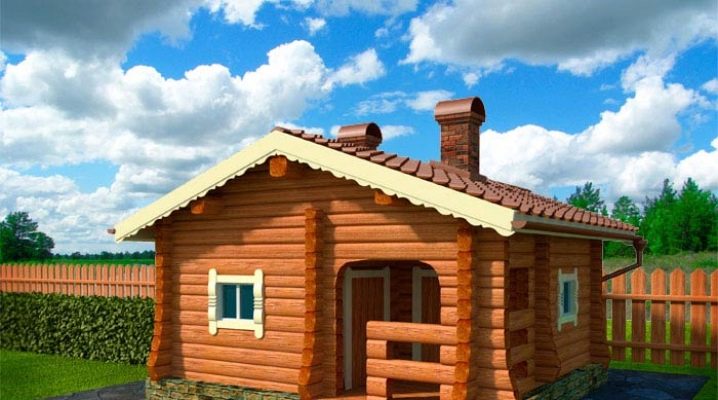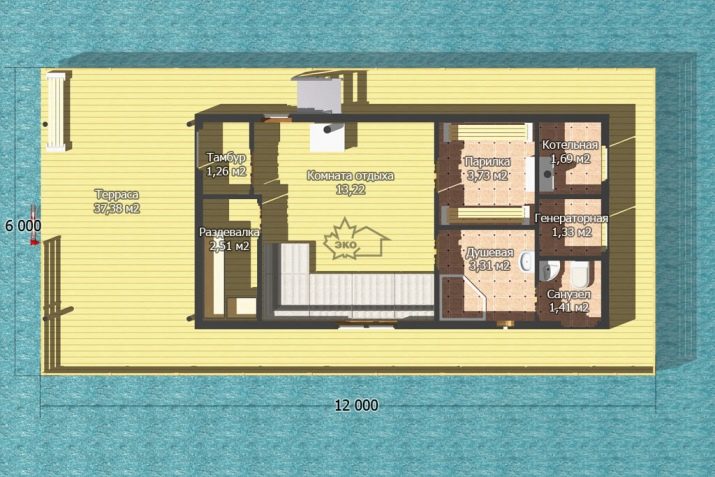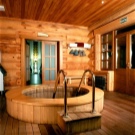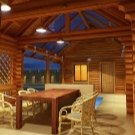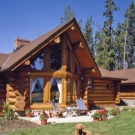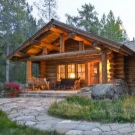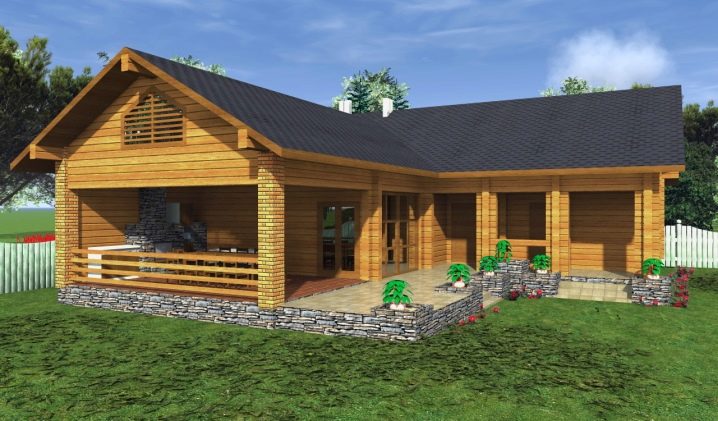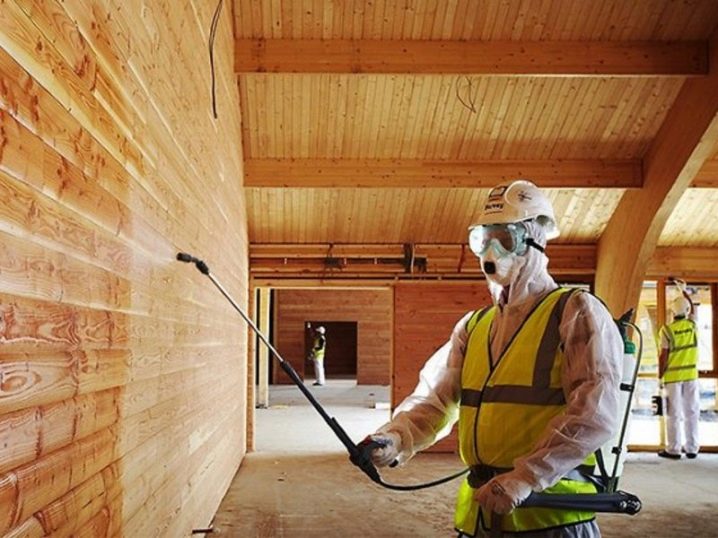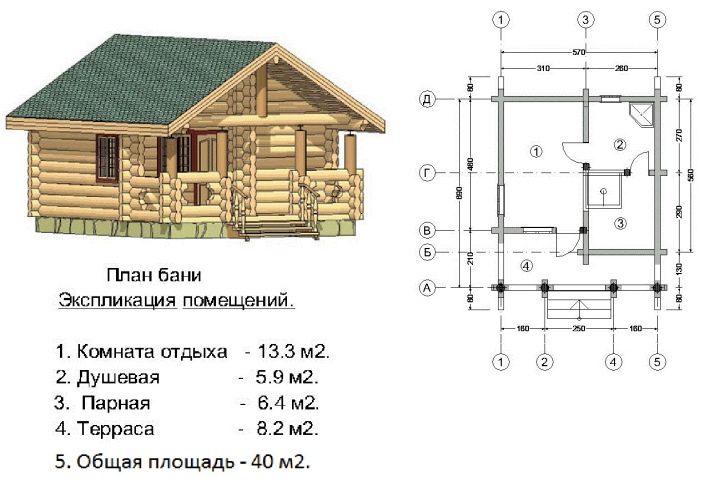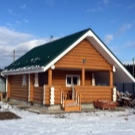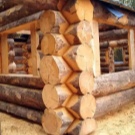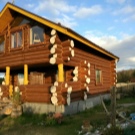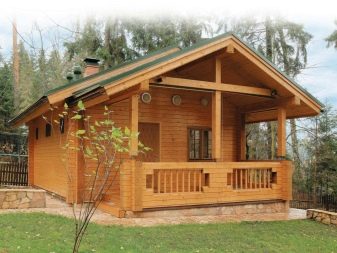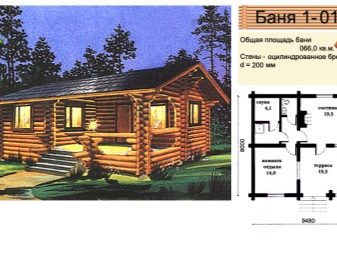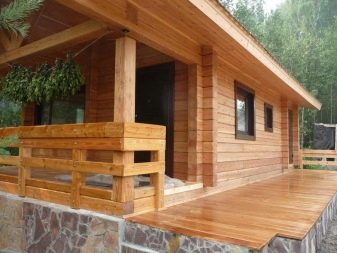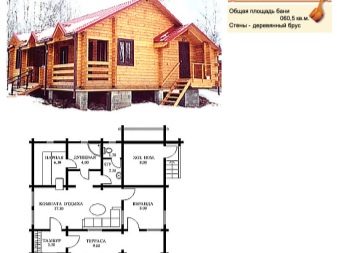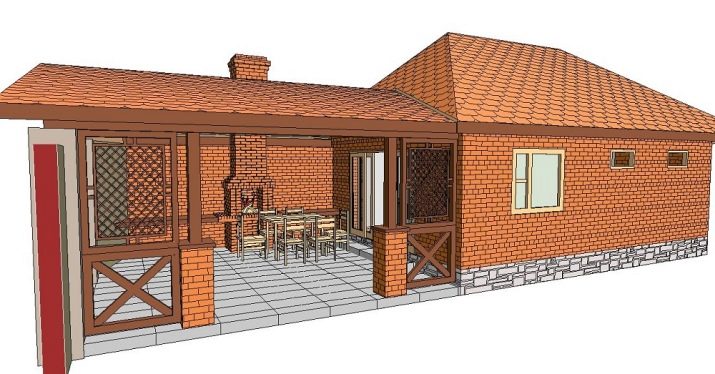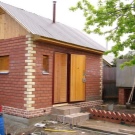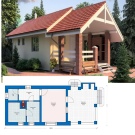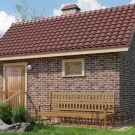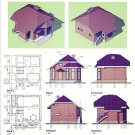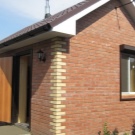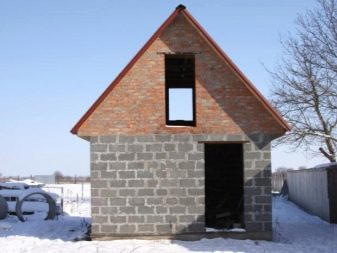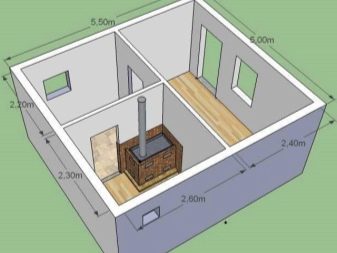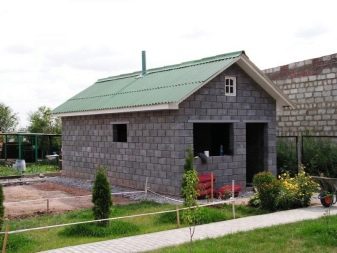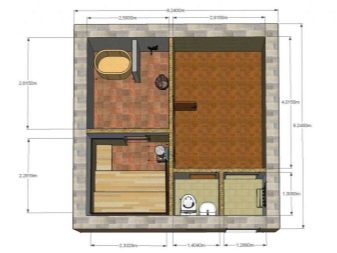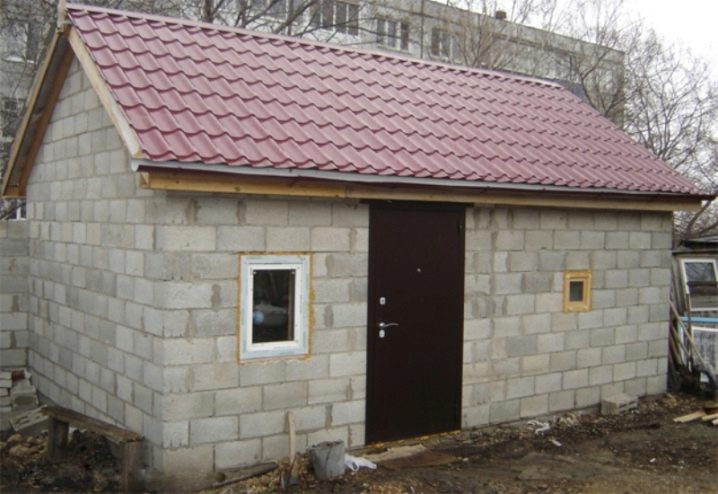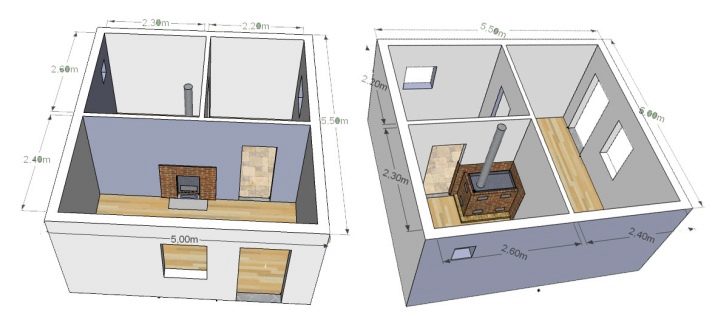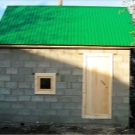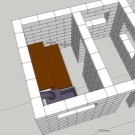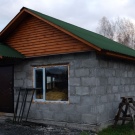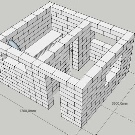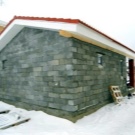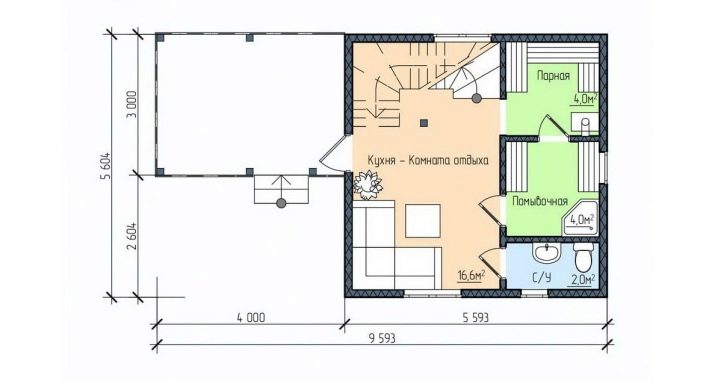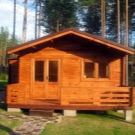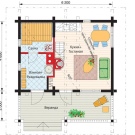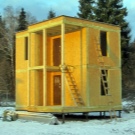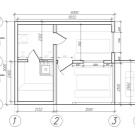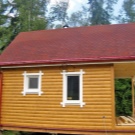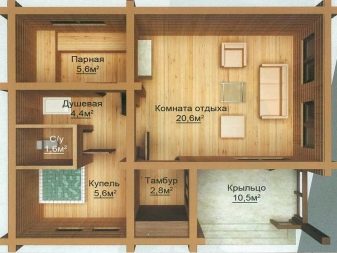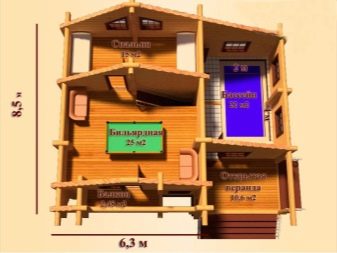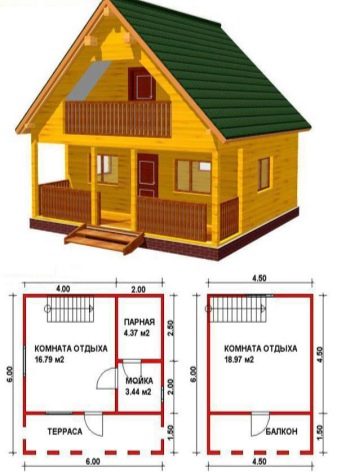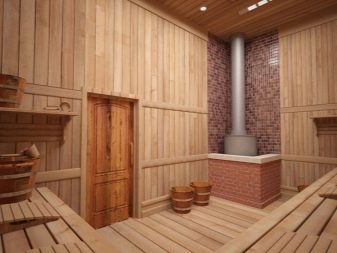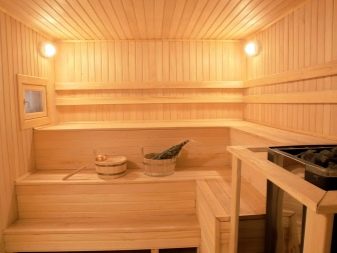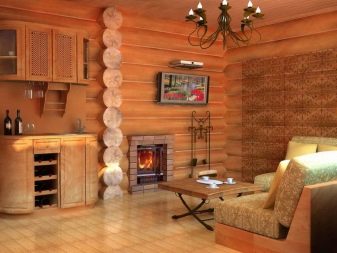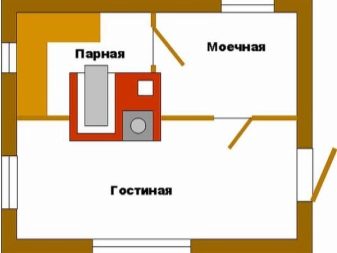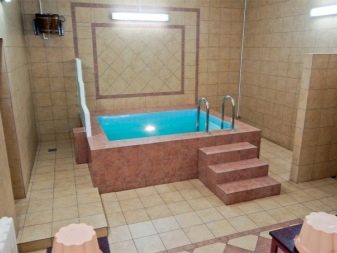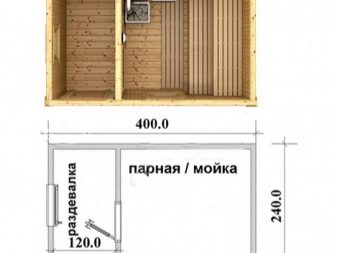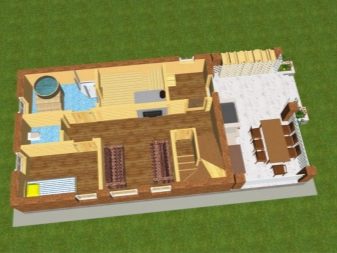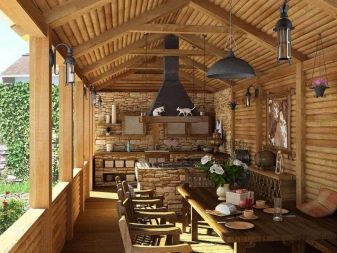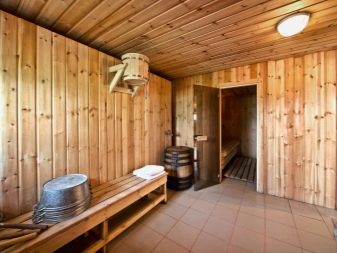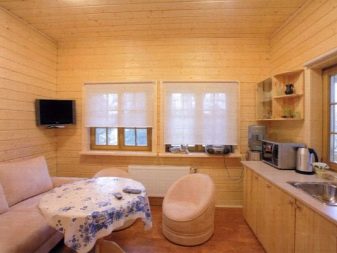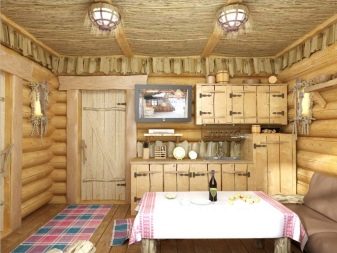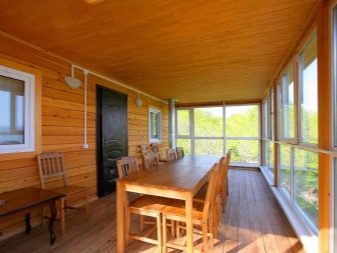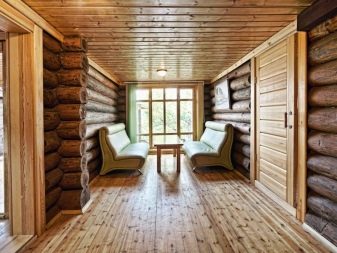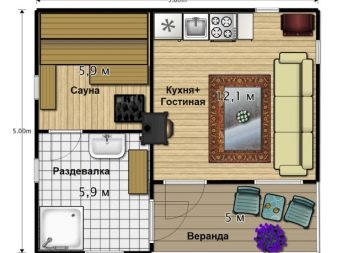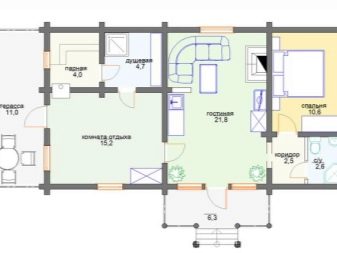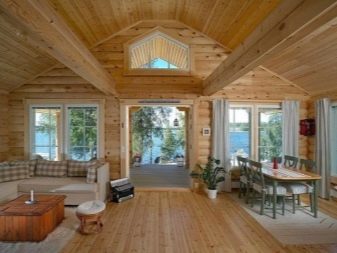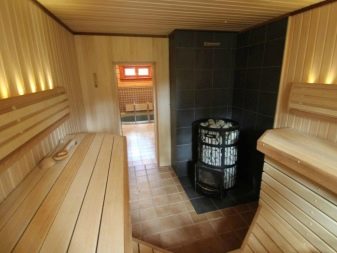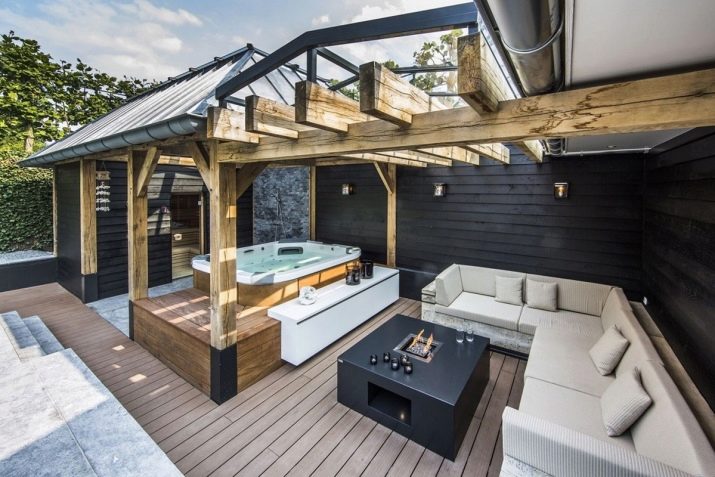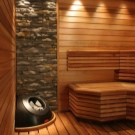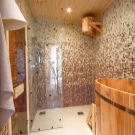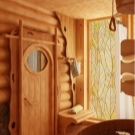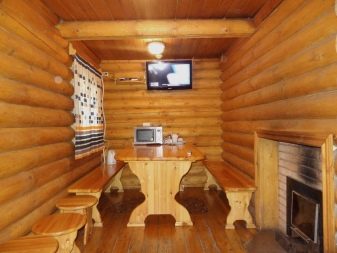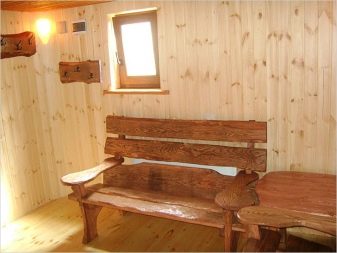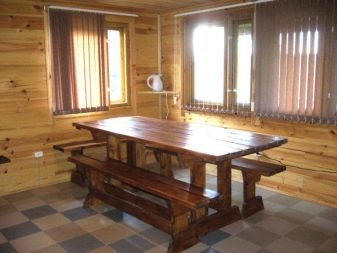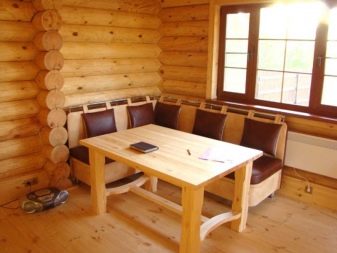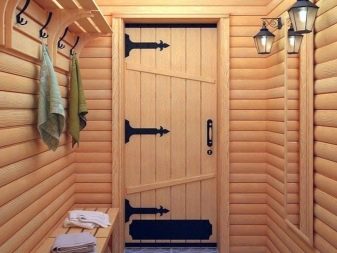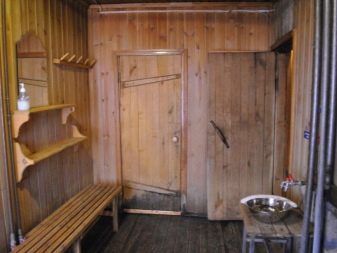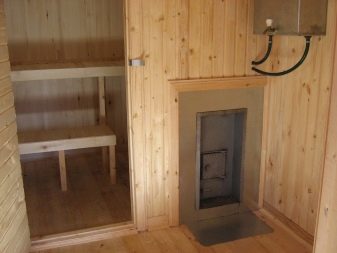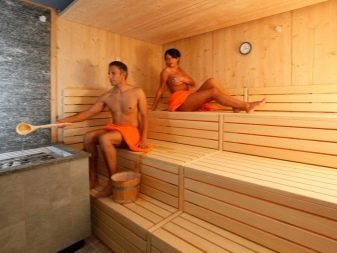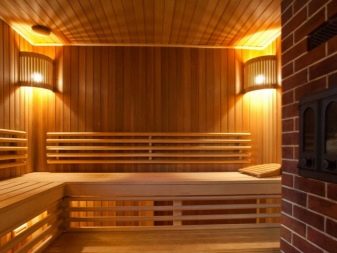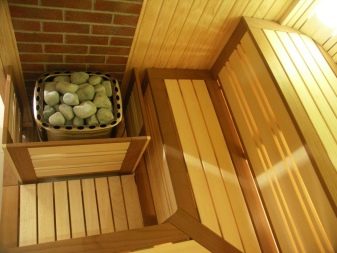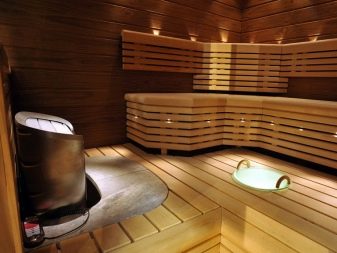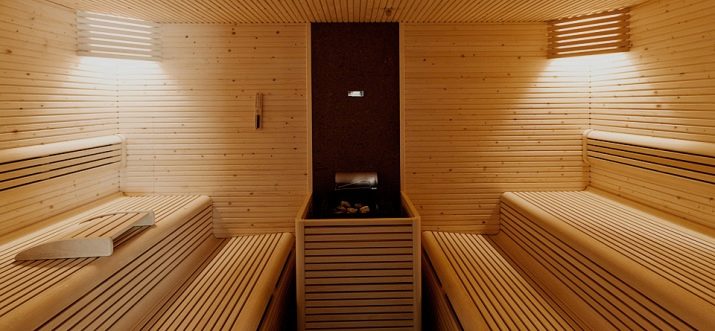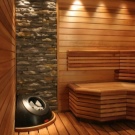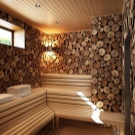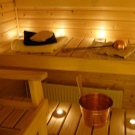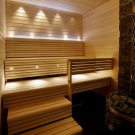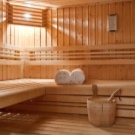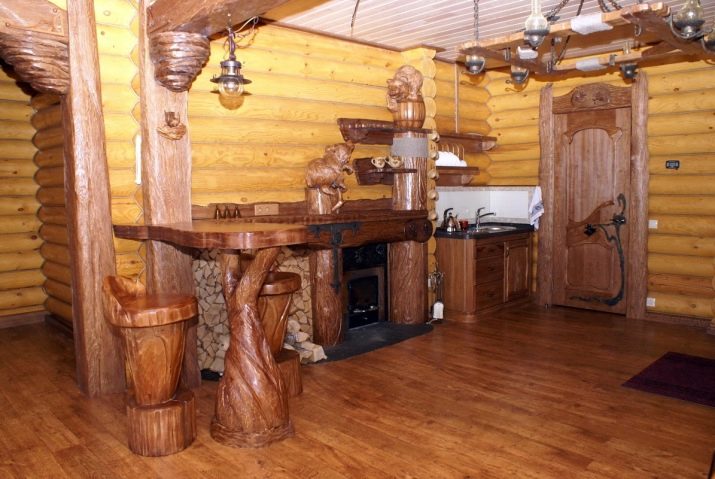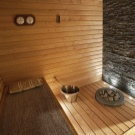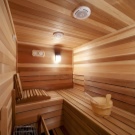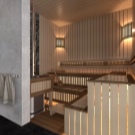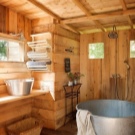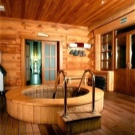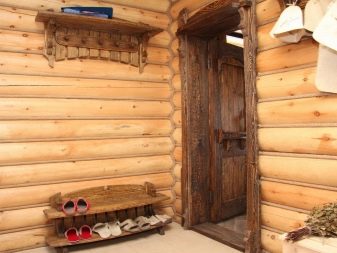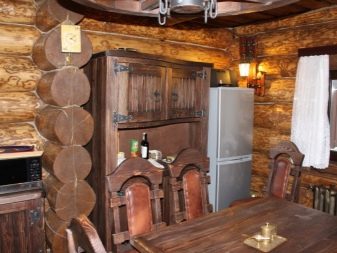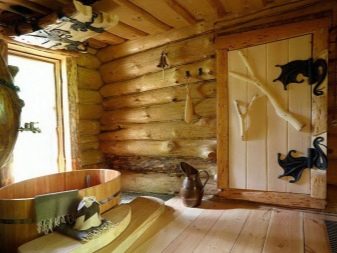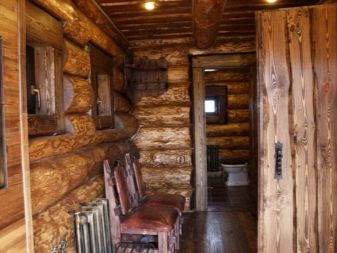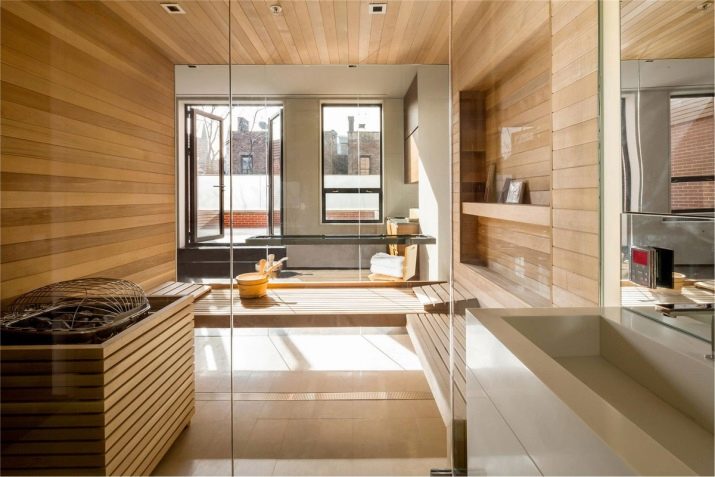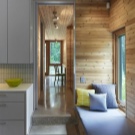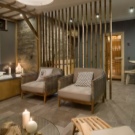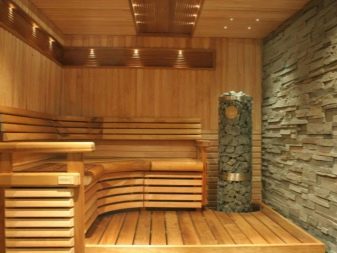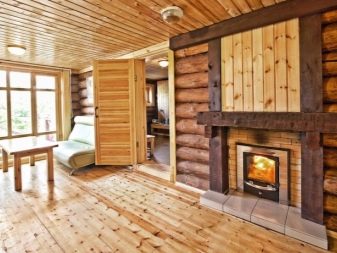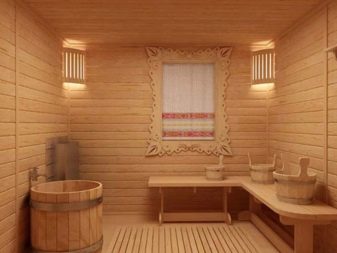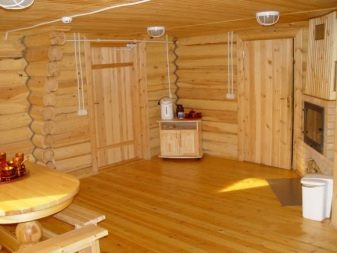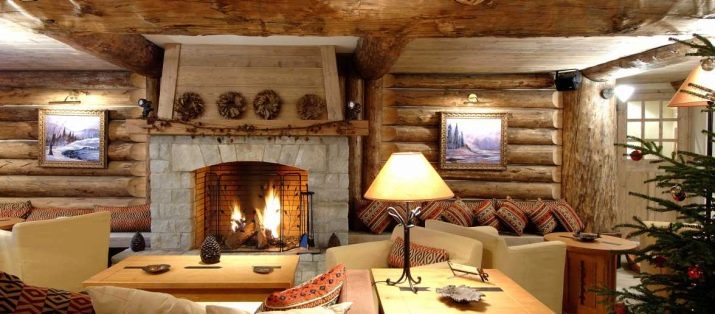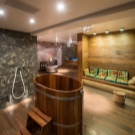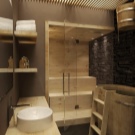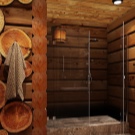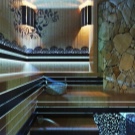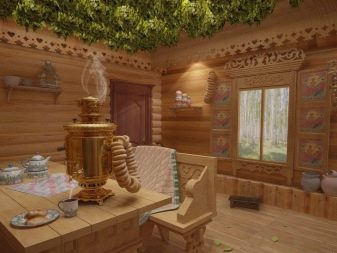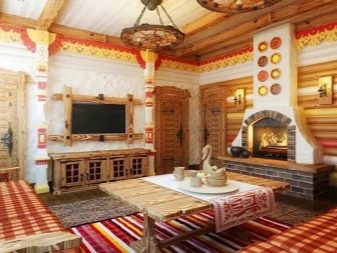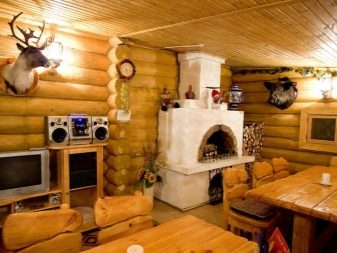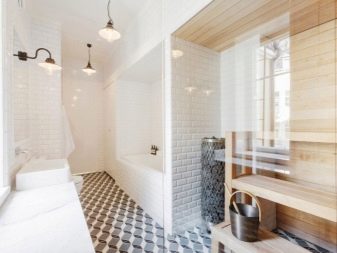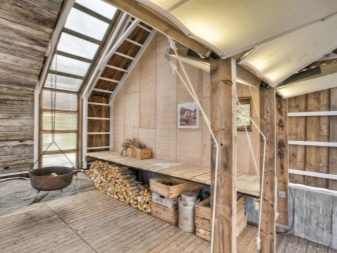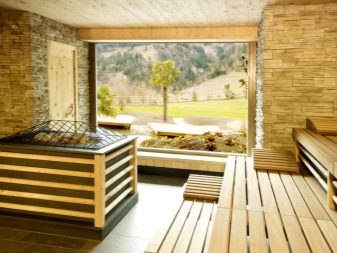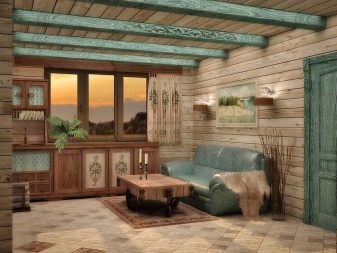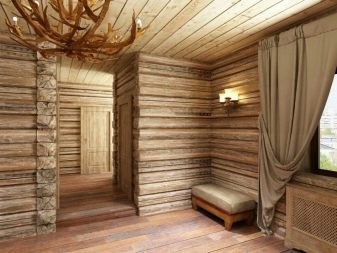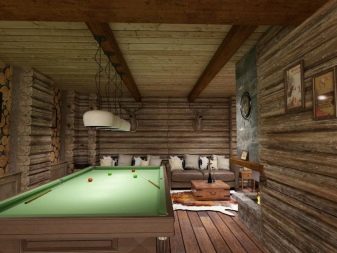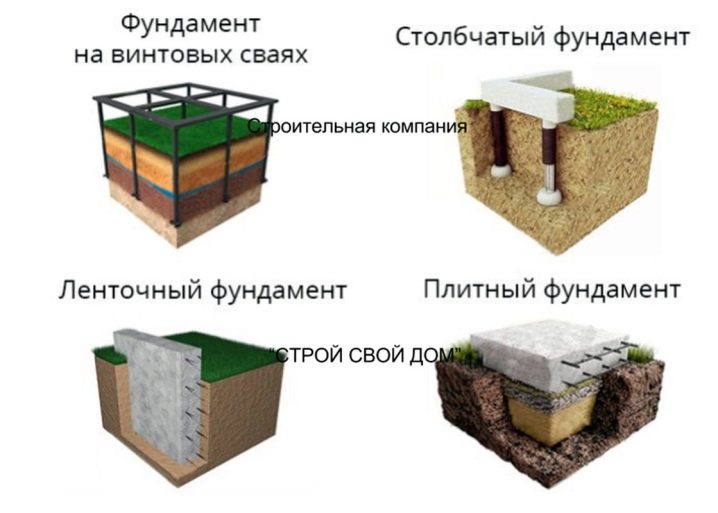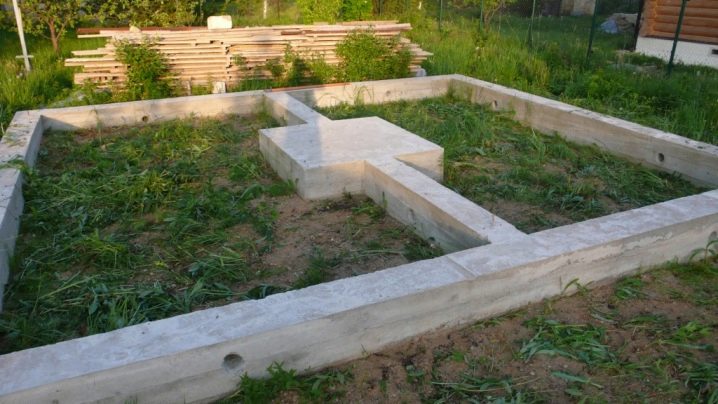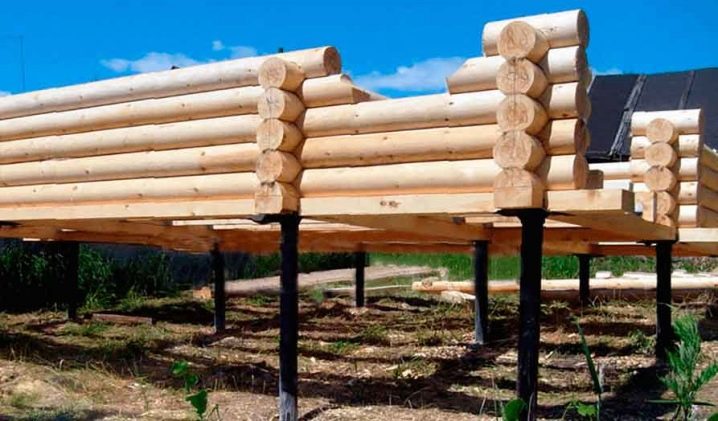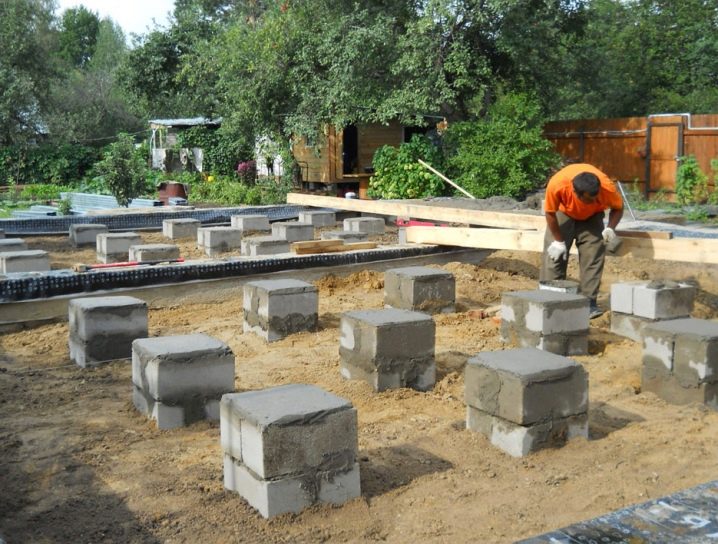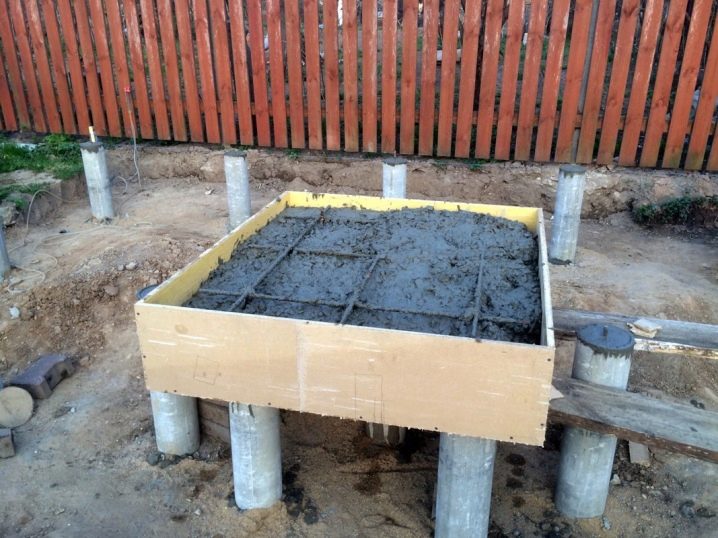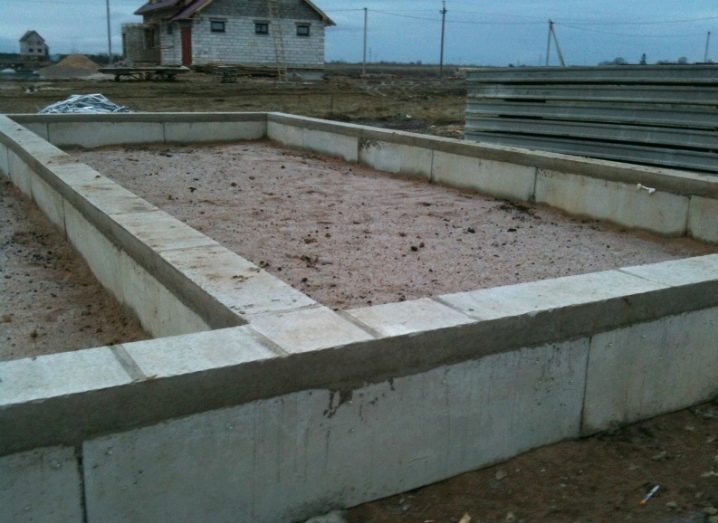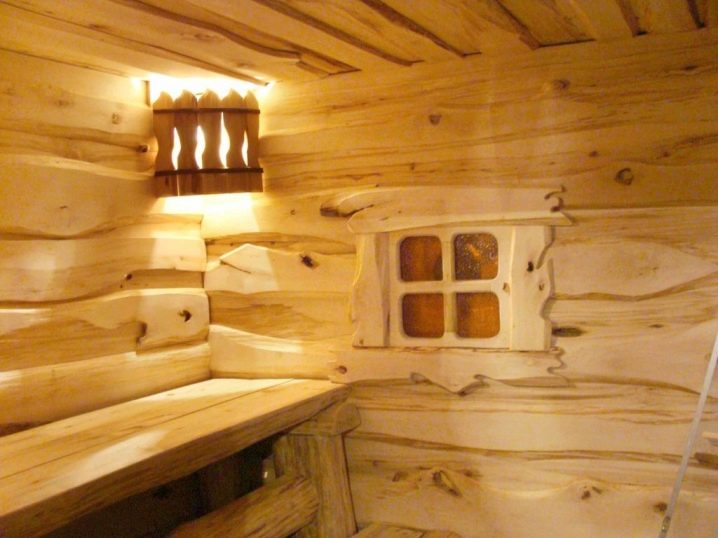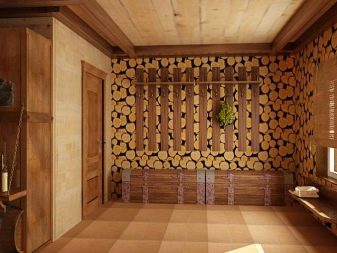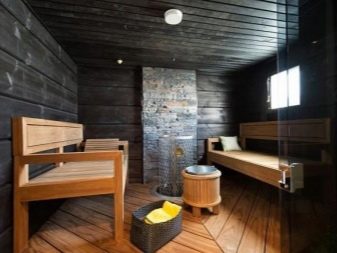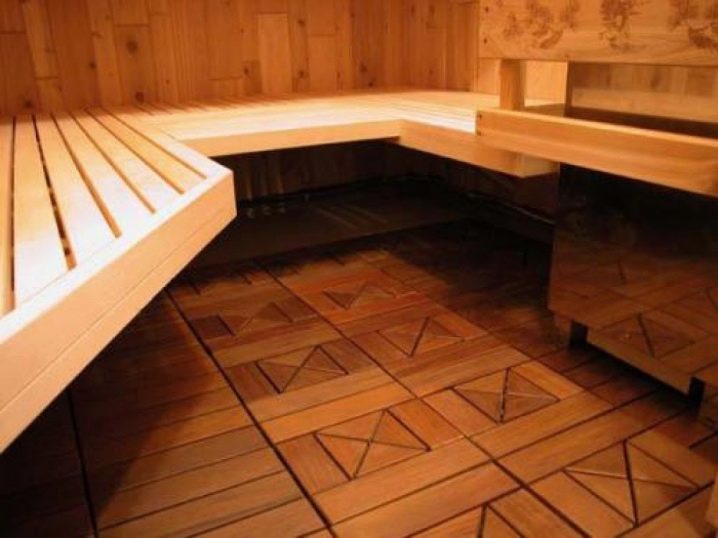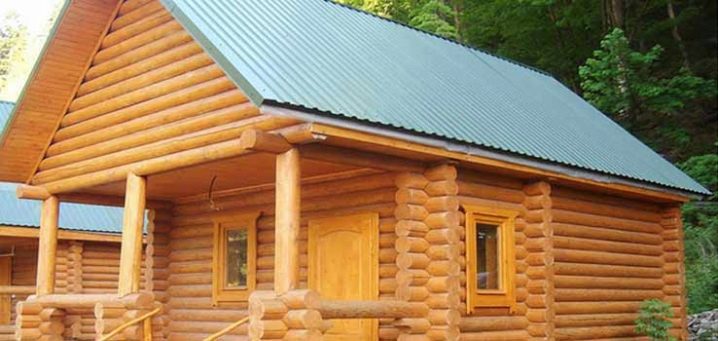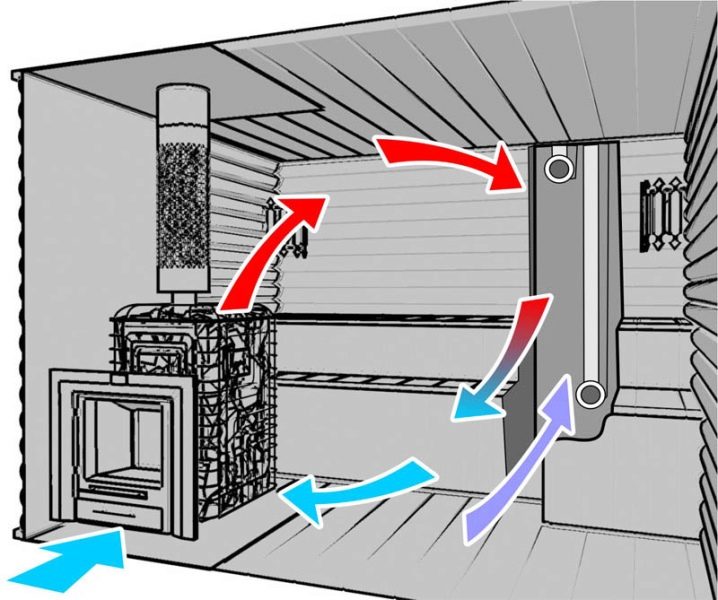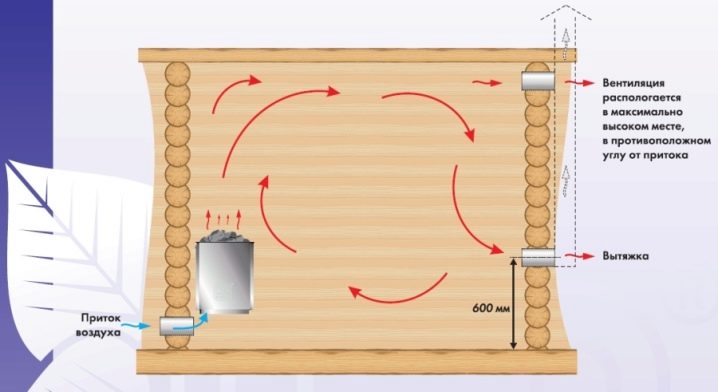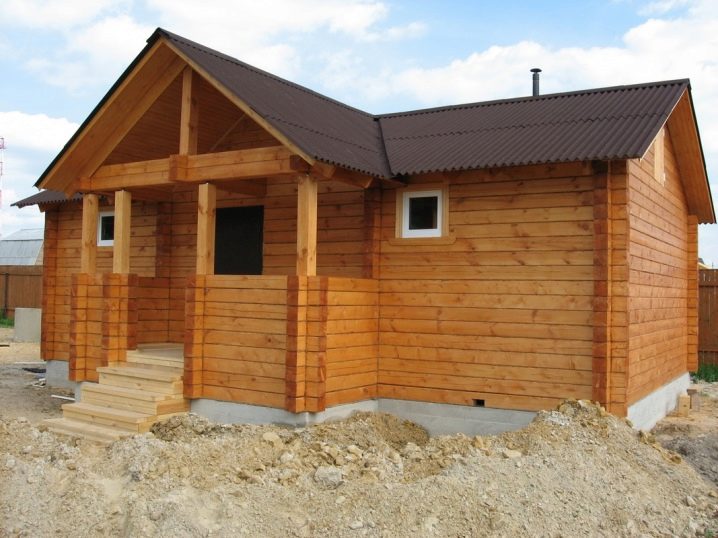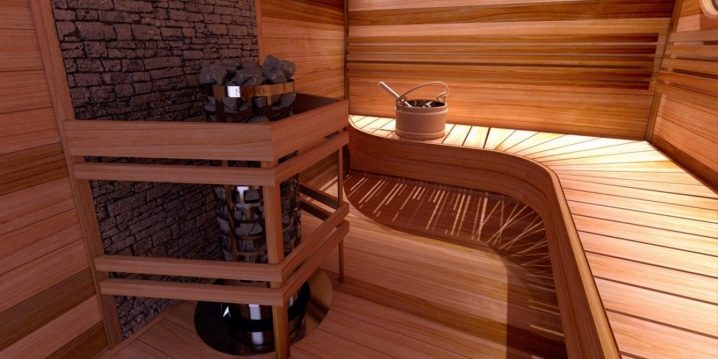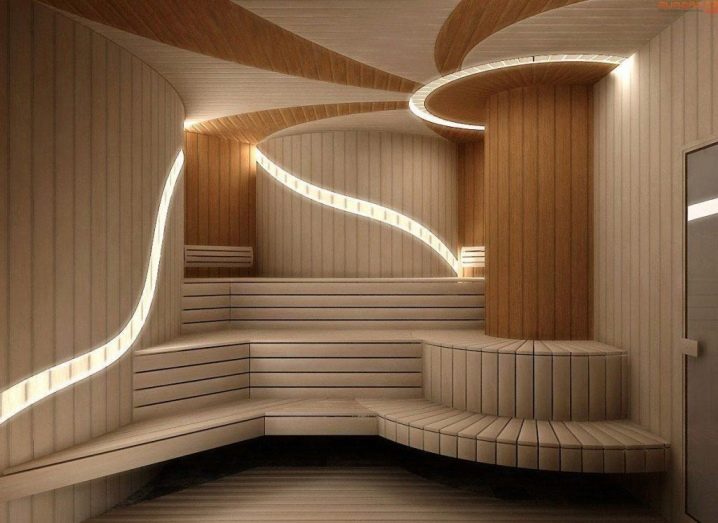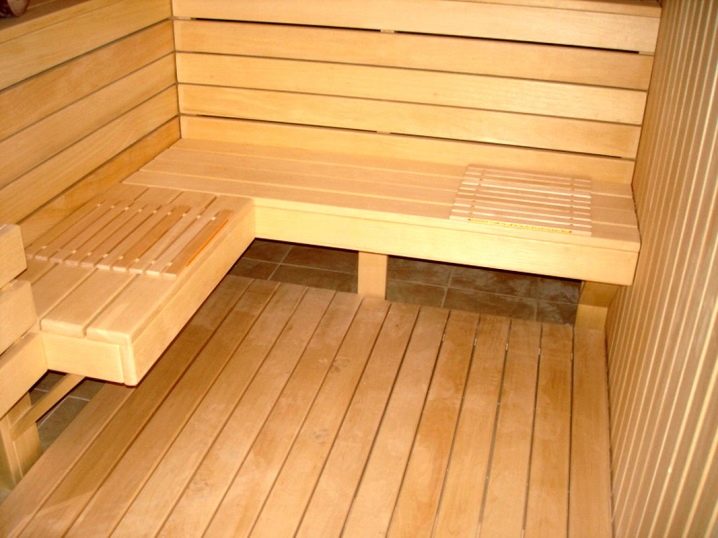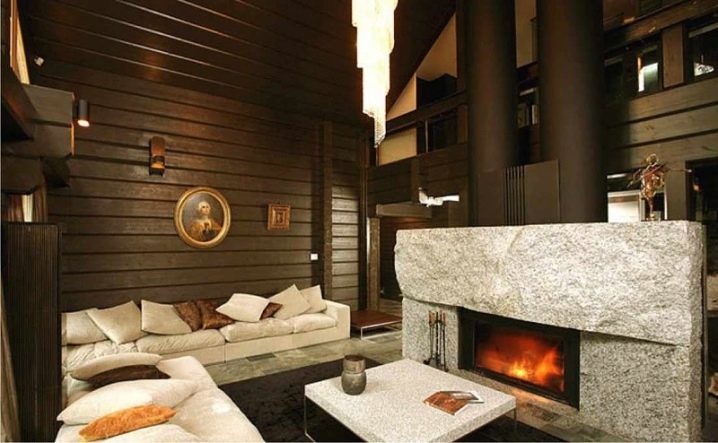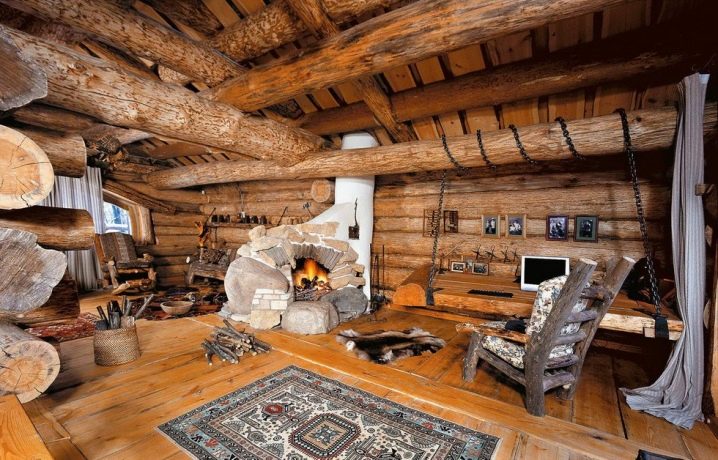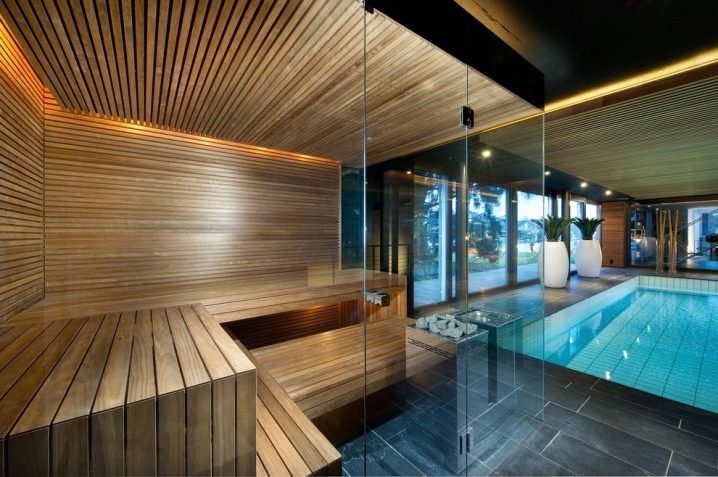Beautiful bath projects
Bath has become a traditional place of rest in our country for a very long time. Today it is a great opportunity to combine wellness treatments and chat with friends. This is the best remedy for winter depression and boredom. Bath today - an integral part of most of the projects of country houses and villas. To build a good bath that meets all your requirements is not easy. However, once you have built a bath of high quality and understood the intricacies of construction and design, you can enjoy the results for several decades.
Special features
Depending on the needs of the customer, modern construction companies offer a variety of projects - from compact single-storey houses of 3x3 to two-storey spacious baths with a pool, bathroom, terrace and gazebo, in addition to the main premises - washing room and steam room.The bath can be a separate building on the local territory, or it can have a common roof with the house or it can be connected with it by a covered gallery.
Modern bath is built from the usual wooden timber or logs, but also from expanded clay blocks, CIP panels, bricks and other materials. The choice of possible options is so great that you can choose a project that 100 percent satisfies all your requirements and budget. It is necessary that the bath also meets the safety rules (first of all, fire), GOST, building codes and regulations (SNiP).
Materials
It was mentioned above that the materials for the construction of baths can be very diverse. Each type of material has its own characteristics, advantages and disadvantages.
A wood bath has many advantages. This and environmental friendliness, and the pleasant smell of wood in the room, and good thermal insulation. Wood releases healthy substances when exposed to high temperatures, thus creating an aromatherapy effect. A wooden bath will last at least 10 years. Specially treated with antiseptics wood can last 2-3 times longer.
The log (rounded or chopped) - traditional material for construction of a bath. Choosing the type of wood, it is better to stay on conifers, for example, pine, spruce, larch. They are suitable for all rooms, except the steam room, due to the strong smell of tar. For the steam room more suitable wood species such as aspen, linden, birch or oak. Baths made from round or chopped pine logs are durable and do not rot. Often for the construction of baths use logs from birch, oak and aspen or linden. Linden and aspen keep warm well, and they do not burn the skin when heated. Construction of one floor of a bath requires about 10 rows of logs. In most cases, preference is given to a rounded log with ready-made corner joints and grooves for insulation.
Wooden timber is considered to be a highly environmentally friendly material, durable, has a low thermal conductivity and is therefore ideal for a bath. The bath from a bar looks aesthetically pleasing, the walls are smooth and pleasant to the touch. In construction, the usual profiled or double timber is used.
Double timber consists of several layers: internal and external, between which are laid insulation (ecowool) and various substances (antiseptics, boric acid, etc.), ensuring the fire safety of the building. The wall of the double beam has a high thermal efficiency, despite the fact that its thickness is only 220 mm. The small thickness of the timber also provides for the rapid heating of the bath. Another important advantage is that a sauna is constructed from a timber in a short time (approximately 3 months) and at any time of the year.
Brick is used for the construction of baths quite often, because it is environmentally friendly and durable than wood, it looks aesthetically pleasing and does not require additional lining, has good thermal insulation. The main advantage is fire resistance and safety from the point of view of external impact. The main disadvantage is the high price, long construction time and the cost of additional insulation and ventilation system. The brick bath warms up for quite a long time - the heating time can reach several hours. However, such a bath will last a long time, in a few years it will only be necessary to replace the interior.
Expanded clay blocks are produced from a mixture of expanded clay, cement, water and sand. They are considered to be environmentally friendly, durable (subject to certain rules of operation) and fairly budget material. Due to the low thermal conductivity, claydite blocks are frost-resistant. The building blocks are quite large - the middle block has dimensions of 390x90x188. Due to this, in contrast to a brick bath, such a building can be erected in a very short time.
In construction, various types of blocks are used: wall, partition, chimney, facial, ordinary, corner or dressing. Therefore, if a set of blocks is ordered, it is important that they have a specific marking. There are also blocks to choose from: corpulent or hollow.
The main disadvantage of expanded clay blocks is a high hygroscopicity, due to which moisture can accumulate in the unit. This leads to the destruction of the walls. Therefore, when building a claydite bath, it is necessary to think very well about the ventilation system in order to eliminate the accumulation of steam in the walls. Calibrated (multi-gap) blocks with tongue-and-groove connection are ideal for building baths. Due to the presence of many longitudinal slots, the heat transfer increases,thereby increasing the strength of the walls.
Cheaper than other materials cost the construction of a bath of aerated concrete or foam concrete. The main advantage of aerated concrete blocks - the speed and ease of construction. They are also energy efficient and have good thermal insulation. The service life of such a bath is longer than that of wood. The blocks are lightweight, do not load the foundation, are suitable for the construction of baths in any place. When choosing lightweight concrete panels as a building material, you must always think about the insulation and siding (exterior cladding). From the inside, the walls of the sauna are trimmed with an antiseptic-treated tree. It has both a utilitarian and aesthetic value. Wood is pleasant to the skin, does not burn, retains heat and looks beautiful. After a few years of use, only the replacement of the interior is made, the concrete blocks remain in the same condition and do not require replacement. The internal walls of the washing room are most often laid out with non-slip ceramic tiles.
For the construction of a bath, a material that is quite fashionable today is a CIP panel.They are made of compressed wood shavings and foam polystyrene insulation. Bath walls of CIP panels are lightweight and do not require a deep foundation. You can build a bath from the panels in just three days. Another advantage is good thermal insulation, thanks to which the bath warms up quickly and well. If you use special CIP panels (OSP-3 plates), you can protect the walls from rotting and mold. It is better not to build a bath from SIP panels, but to seek the help of masters. It is very difficult to build such walls by yourself. Among the shortcomings can be noted the high cost of the material, fragility and deformation at temperatures from 120 degrees.
Subtleties of design
Before you build a bath, you must decide on the project. You can use ready-made projects, contact the experts or create a project yourself. This is an important step, despite the fact that the construction of the bath does not require obtaining permission and coordination of the project. Preliminary design will allow to avoid errors in construction and with the calculations of materials and budget for construction.
First you need to decide on the number and size of the premises.
The choice of the size of the building will depend on several factors. First, the size of the local area. Secondly, on the size of the family and the companies with which you will rest there. Thirdly, from financial opportunities, because quality materials will be quite expensive. Bath may be a separate house or be under the same roof with the house. A separate bath should be at a distance of at least 10 meters from the house. This is necessary both according to the safety rules and to prevent the ingress of smoke from the stove into the living rooms. Modernly look baths with a single-pitch roof or a canopy under the garage. Modern design companies offer a variety of different models and styles of baths, it is only necessary to determine the area under construction.
Projects of baths larger than 10 m2 usually include a waiting room (vestibule). It performs an important function in construction. This is a place to store a stock of firewood, outerwear and shoes, and most importantly, the transition zone between the street with a low temperature and the heated bath. The dressing room can be equipped in a lounge or combined with it. For comfort, this part of the bath should occupy an area two times larger than the steam room.The entrance door opens outside, and it is better to arrange it on the south side, then the drifts in front of the door will be lower. Double-glazed windows are placed at a level of 1 meter from the floor.
Ideally, the stove is located in the rest room and heats both it and the steam room. In this case, the firebox is located in the rest room, the heater is in the steam room. The shelves in the steam room must be positioned so that there is room for the stove and for walkways to the shelves. The location of the shelves may be different depending on the position in which visitors will be soared (sitting or lying). If a ventilation duct is not provided in the steam room, then it is necessary to place a small double-glazed window in it to ventilate the bath.
The door of the steam room is usually smaller and has a height of about 1500 mm with a high threshold. The steam room can be combined with the washing and separated by a small partition. It is necessary to take into account that in this case the temperature in the room will be slightly lower, and the air will be more humid.
Washing room is often designed as a separate room. Depending on the size of the bath, it can be a shower, as well as a font or a pool, as well as a bathroom in a separate area.In the case of restrictions on the area of the pool and a font located on the street. The washing size must be larger than the steam room, otherwise it will not be comfortable to use it. In the washing zone also have a window. It should be under the ceiling, at a distance of 1.5 meters from the floor to avoid drafts.
Depending on the size of the area, the layout of the first floor of the sauna includes a terrace or summer terrace. It is important that the bath and porch be built from the same materials, and also located at a distance of 10-15 mm from each other, that is, without a rigid bundle of foundations. The distance between them is filled with elastic material and covered with casing. The floor of the bath should be below the floor of the veranda by 50 mm. This is explained by the fact that the weight of the bath with a stove and the verandas are significantly different, therefore, a rigid fixation of the roofs and soles can cause the building to warp and deform. In this case, the veranda must be designed with a bath. If the bath is already built, then you can attach a terrace instead of a veranda.
The bath with the second floor also serves as a country house., and places for spending the night of guests, and for rest and improving water procedures.In the projects of two-storey baths on the second floor, you can think of the placement of the living space: a guest room, a bedroom, as well as a billiard room, a rest room and a balcony. Instead of a full-fledged second floor, you can also equip the attic floor for a guest or bedroom. If the bath has to allocate a dressing room, the rest is 2 floors or equipped loft. It is necessary to think carefully about the location of the supporting structures and a solid foundation, because an additional load on the foundation is created. The second important point is heat and vapor insulation between floors. Otherwise, it will not be possible to avoid mold on the ceiling.
Designing an angular bath can cause some difficulties when zoning, however, it can significantly save on the area. The layout of the corner bath assumes the location of the rest room and the steam room on both sides of the stove (the fire chamber goes into the rest room, the heater - in the steam room). The entrance to the bath is covered on both sides.
Small
The most common projects of small one-storey baths measuring about 16 m2 imply the presence of three main rooms: a steam room, a washroom (shower) and a rest room.It can be a square bath of 3x3 or 4x4 or rectangular with a ratio of 5 by 3 or 6 by 3. A 3x5 bath is quite suitable for one person or a small family. The size of the steam room - no more than 4 m2. For an example, the project of a small bath of 4x3 in size. We divide the whole space into 2 parts: a steam room and a small shower room, separated by a thin partition, together make up half the area (2x3), the second half - a rest room also measuring 2x3. Such a bath can be either a separate building or an extension to the house. Today, many customers are attracted to combined projects, for example, a bathhouse with an economic unit (with a shed) under one roof. For a small bath fit foundation on stilts.
Average
Such a bath may include, in addition to the three main rooms, a place for a kitchen, as well as a veranda or a dressing room. Planning can be with a separate toilet. There is enough space in the lounge for upholstered furniture. This is a bath in which, if necessary, you can sleep. It rather resembles a mini country house. A typical draft of a 6x3 medium-sized bath may have the following layout. The whole area is divided into three parts along the long side: a rest room (3x2), a washing room (2x2) and a waiting room (1x2) in the middle, a steam room (3x2).The rest room, washing room and steam room are located one behind the other in exactly this order. From the waiting room - the entrance to the rest room. Another variant of the average typical country house is square, with 3-4 rooms, has dimensions of 5x5. For an average bath from a tree it is possible to use the column base. This is a simple design that is great for lightweight wooden buildings.
Large
A large single-storey sauna with a size of about 40 m2 is suitable for giving with a large house territory. She can have a separate dressing room, larger veranda and kitchen, as well as a swimming pool and a terrace for barbeque. You can make a project with a small font. A huge number of projects of large baths with sizes of 6x8 or slightly more - 9x7, with terraces and vestibules, are represented by renowned designers. A bath with walls of 6 to 8 contains all the necessary components of a good bath: on the ground floor you can place a steam room, a washing room, a rest room, a bathroom, a terrace and a vestibule. A bath with a ratio of walls 7 to 9 is, in fact, a small country house. Even a single-storey bath of this size can be equipped with everything necessary for a good rest.
Zoning
Depending on the size of the bath, the whole space can be divided into 3 or more zones. Even a minimum size 2x3 bath is recommended to divide by internal partitions, and not to leave one room. Firstly, a small steam room warms up faster, and secondly, the washing room should be separate so that it does not smell damp in the steam room. And, finally, the waiting room must be protected from the ingress of steam, otherwise it will not be comfortable in it.
First, you must select a waiting room, the rest of the space - for washing and steam rooms. Usually in a small bath a small zone is allocated for it at the entrance, on the one hand of which there is a door to the street, on the other - in the washing room. In the smallest waiting room there is enough space for a small bench. For this, one third of the entire area is sufficient. If the bath has a size larger than 2x3, for example, 6x6, then here you can select a large area for the dressing room, combining it with a rest room. Then you can allocate for this zone half the entire area. If the area allows, then in front of the vestibule you can build a terrace or allocate space for a veranda. In this case, a rest room inside the room is not necessary, it can be equipped on the terrace and use it in the summer.This option is ideal if the bath is attached to the house and you can relax in the winter directly in the house.
Next, you should separate the steam room from the sink. Combined washing and steam room - not uncommon, but ideally between them should be a partition. If the bath is used by one person or a small family, then for washing it is enough to select an area of 600x600 mm. It can accommodate only a shower. Equip the rest of the area under the steam room. If there is a possibility and necessity, you can also place a bathroom, swimming pool or font in the washing area. Example of zoning bath 20m2 (4x5): a rest room of 8.5 m2, a washroom and a bathroom 2.2 m2, a steam room 4.8 m2.
The most important bath area is the steam room. When planning the size of a steam room, you need to consider that 1 m2 is required per person plus space for a stove. As a rule, the minimum size of the sauna is 2 m2. If the furnace is not brick, but metal, then it should be separated by a brick partition to avoid burns. Also, a metal oven should be located at a distance of 1 meter from the wall. This does not apply to a brick oven.
When zoning the steam room, not only the preferences of the owners are important, but also the fire safety rules and construction norms.
The size of the steam room is determined by several factors:
- device ventilation system;
- materials of which the bath is built;
- the size of the family that will use the bath;
- features of the furnace installed in the steam room (size, power, type);
- the number and location of shelves and other equipment in the steam room, ergonomic indicators of the steam room.
In a small steam room 1-2 seats are enough, in a large, you can arrange several horizontal shelves. To save space, you can cascade the shelves. Additional rooms and zones (billiard room, bedroom, kitchen) are allocated depending on the available area. Often these rooms are located on the second floor.
Design
Interior decoration - a stage no less important than the design of premises. The design of a modern bath has many variations, from traditional to very original innovative ones. One thing remains almost unchanged - this is the predominance of wood in the interior. The tree itself looks aesthetically pleasing in terms of design and interior. Several important details in the interior will give even more atmospheric indoors.
Walls and ceiling of the steam room and rest rooms can be upholstered with clapboard or boards. The following wood species have a pleasant texture and aroma: linden, aspen, poplar, oak, as well as expensive African abachi oak.
Original design options "antique" are often created due to the special processing of wood. (brushing and firing). In such interiors, it is imperative to use textiles with embroidery, forged elements, wooden accessories with carvings, decorated with brooms walls. This creates an atmosphere of a forest hut. This gives the interior a certain originality. The protective element on the metal parts of the stove, as well as the wooden frames of the mirrors in the washing room and the steam room, can be turned into a decorative element. As a decor, you can use both raw logs and pieces of stones on the walls.
In most modern baths, more often, you can still see perfectly smooth, even and often lacquered boards and modern minimalist decor. Shelves must be treated with oil, wax impregnations or akvalak. Instead of traditional lamps and lights with wooden lampshades, small LED bulbs are used.In general, the lighting in the bath is calm, muffled, creating an atmosphere of relaxation, intimate. The decor in a modern bath, as a rule, is a minimum - these are chrome-plated faucets in the washroom, floor tile, and several interior accessories.
Rounded corners, flowing silhouettes of furniture in the bath - this is almost the rule today. The roundness in the interior repeats the texture of wood and complements it, creating a feeling of fluidity and relaxation.
The floors of the bath can also be laid boards or clapboard. Today, tile is used more often for the floor, since it is easier to keep it clean, it looks more modern. For the bath, the most suitable will be calm pastel colors in everything, including the decor. Washing can be tiled completely, in the steam room is only on the floor. For convenience, you can put a wooden lattice on top of the tile in the steam room. Instead of tile, you can use and lining, treated with a special akvalak.
Style
Depending on the taste, preferences and needs of the owners and finances, the style of the bath can be very diverse - Russian bath, chalet, Finnish sauna, Turkish bath, Roman bath, Japanese bath (ofuro, sento or Furako), etc.Each type of bath has its own specific style of construction and interior. In addition, it can be built in the general style with the house and other buildings on the territory. Consider a few styles of bath interiors.
Bath in the Russian styleAs a rule, it implies the presence of only two or three rooms: a dressing room, a washroom and the steam room itself. It is considered traditional “cheap prints”, wooden carving, brooms on the walls, embroidered tablecloth and samovar, as well as rugs on the benches. Russian bath has a small size, so easy to warm up to the desired temperature. The average temperature in the room is from 45 to 70 degrees. Building materials are, as a rule, wood, less often brick. A mandatory element of the Russian bath is a brick or metal stove. It is usually located between the rest room and the steam room. Ideally, a Russian bath is being built near the pond. If it is not, next to the bathhouse arrange bath or swimming pool.
Scandinavian style bath (Finnish sauna) differs from the Russian one, primarily because the air temperature in it considerably exceeds the temperature of the Russian bath and reaches 130-160 degrees.The Finnish sauna has a very simple interior, a maximum of natural materials in the decoration, a minimum of decor. Ideally, it should be in a picturesque place, so that after a bath, you can enjoy a beautiful view of the forest or the lake. Finishing inside the Finnish sauna is usually made of light wood. The furniture also has simple clear forms, without patterns and carvings. The Scandinavian style is an eco-style, so the underlined environmental friendliness is visible in everything - from construction to decor. In the interior itself there can be 1-2 bright accents, for the rest - neutral tones.
Bath chalet-style alpine house, also has some elements of country style, as well as eco. For the interior, natural wood and stone, natural skins, rugs and carpets in the lounge, original lighting using LEDs, mosaics, etc., as well as a mountain landscape from the window are used. The decor has a lot of wood (logs, log cabins, hemp, etc.). For the bath in the eastern style (Turkish hamam) is characterized by the use of mosaics and tiles with oriental ornaments. The decor has many bright colors, red and gold. Statuettes, ottomans, hookah, dressers, low tables and other furniture occupy almost the entire space of the rest room.
Foundation
Before you build the bath itself, it is important to choose and design the foundation. It plays an important role as a foundation under the walls, and as a protection of the bath from excess moisture. The main types of the foundation - tape, screw, monolithic and columnar. The choice of the foundation depends on the size of the bath, the number of floors, soil features on the construction site.
For the construction of the strip foundation is suitable for any soil. It is necessary to take into account the size of the bath itself, as well as slopes and soil subsidence. It is important to consider and at what depth is the water. The strip foundation requires more time and effort to build, but it is perfect for heavy double-deck baths. Earthworks for laying strip foundations are necessary.
The screw base is suitable for any soil. It is a steel pile with tips for screwing into the ground. Pile-pipes come in various diameters, solid or hollow, on which logs for bath walls are installed. Immediately after installing the piles, you can start building a bath.
Column foundation is often used for wooden baths of small size. Often it is chosen by those who build a bath with their own hands.The bar foundation is very easy to install. Columns of wood, concrete or metal are located at the corners of the building and at the intersection of the walls. However, this foundation is not suitable for massive and heavy baths.
The monolithic foundation is often used for the foundation of large baths and in the construction of heavy materials. It provides a reliable basis for the construction, protects from subsidence and moisture. The monolithic foundation is a continuous layer of cement and rubble.
Separately, it is necessary to consider the foundation under the stove. If the total weight of a brick kiln is equal to or more than 750 kg, then a separate foundation for such a kiln is necessary. The weight of the brick furnace is calculated by the formula: multiply the furnace volume by 1350 kg. For the brick furnace the butobetonny base will be suitable. It should be higher and deeper than the basement of the bath. For the construction of concrete foundations, you must first arrange a pit. Its bottom is covered with rubble and rammed. Next, you need to make a wooden formwork around the perimeter of the pit and process the hot bitumen. For this fit ruberoid. Next, large and small stones are poured into the pit.
The next layer is cement with sand in a 1: 3 ratio. After a day, you need to fill up with stones again and fill with cement-sand mortar. Every next day, repeat the layers until the upper level of the foundation is reached. A week after the foundation is ready, you can begin to build a brick furnace on it.
Walls
The walls of the bath, as mentioned above, are built from wood, brick, concrete, vulture panels or expanded clay. For the walls of the bath of wood usually use a bar with dimensions of 95x145, 145x145, 150x150 cm or logs of 200-220 mm. As for the finishing of the walls inside, more often for this they use different types of wood (for a steam room), ceramic tiles (for a bathroom and a washroom). It is important to consider the properties of the material when heated. The tree is prone to decay, so wood walls must be treated with an antiseptic solution. Coniferous wood smells strongly of resin, so it is not recommended for the steam room.
You can use several types of wood for wall decoration.For example, combining dark and light tones. Linden, aspen have a pleasant shade and are comfortable for the skin, so often these kinds of wood are used for the walls of the steam room. In the lounge, it is best to use fragrant cedar or juniper planks. Traditionally for the Finnish sauna use spruce and pine for the walls.As a rule, thermo-blocking is used for interior walls, designed specifically for the walls of the bath (it does not form cracks, mold, fungus, it does not rot and does not dry out).
Floor
The floor in the sauna can be made of various materials. First, different materials can be used in each zone. It can be wood, natural stone or ceramic tile. It is recommended to choose a tile so that the pattern is combined with the structure of the tree on the walls, as well as neutral pastel colors. The tile must be non-slip. Otherwise, it is necessary to cover it with a wooden lattice, treated with akvalak.
Roof structure
The construction of the roof is the last stage of the external work during the construction of the bath. The roof for the bath is a fairly simple design, so it can be erected without the help of professionals. A roll roof made of sheet steel, turf, tile, or slate sheets is suitable as a roof for a wooden bath. The next question that needs to be answered is whether the roof will be double or single.
If the bath is adjacent to the house, then the roof will definitely be stooped. More often the roof is simply flat.The gable roof is more expensive, but it allows you to equip the space under the roof as additional rooms. The slope of the slope is determined by the preferences of the owner, financial capabilities (the higher, the more expensive) and varies from 2.5 to 60 degrees. A large angle of inclination is good because the snow in the winter on such a roof does not linger, rolling down. However, a high roof is not recommended in regions where strong winds blow.
Ventilation
Air ventilation system is very important for comfortable use of the bath. It should be thought out at the design stage and fit the size of the bath. As a rule, in the bath there is a mixed forced-air and exhaust ventilation. To this end, the project includes channels for air flow from outside and for exhaust air exhaust. The air intake is carried out through special vents, vents and an additionally installed fan or a ventilation pipe.
The inlets should be located next to the stove so that the air warms up faster. Exhaust vents and furnace bleed (the hole in the furnace below the furnace) provide steam to the outside. They are better positioned opposite the inlets (on the opposite wall).If the exhaust port is located closer to the floor, then it is necessary to install a ventilation pipe in order to increase the draft. It is better if the hole is at the bottom and top. It is necessary to air a steam room every 20-30 minutes.
Tips and tricks
If you are building a bath from a bar, it is important that the bar is smooth and even, without wormholes. It is necessary to choose the best materials for construction, as a well-built bath can last more than a dozen years.
When building a bath, fire safety rules, GOST and SNiP must be observed.
For heating, you can use gas, coal, fuel oil, electricity. The latter is the most convenient, although costly in terms of equipment. For heating with electricity in the modern market offers a number of models of furnaces. It can be an electric heater, a warm floor, a convector or a boiler.
Beautiful examples
Cascading shelves in the steam room allows you to save space and is very convenient for large companies. In this case, you can bathe both sitting and in a horizontal position.
Upholstery clapboard is not only practical, but also aesthetic.The arrangement of the boards vertically and horizontally makes the interior of the steam room more interesting.
Modern interior of a dark wood sauna. Stones can also be used as decorations.
The interior in the old Russian style. Samovar, a lot of carving on furniture, windows, doors, as well as dishes and accessories, typical of the hut.
Chalet style interior. Natural materials in the design and a few bright accents - characteristic features of the style.
Modernist bath with a glass wall and a view of the lake. The light shades of the tree, the picturesque view and the simplicity of the interior create a feeling of complete relaxation and immersion in nature.
How to build a bath with your own hands, see the next video.
